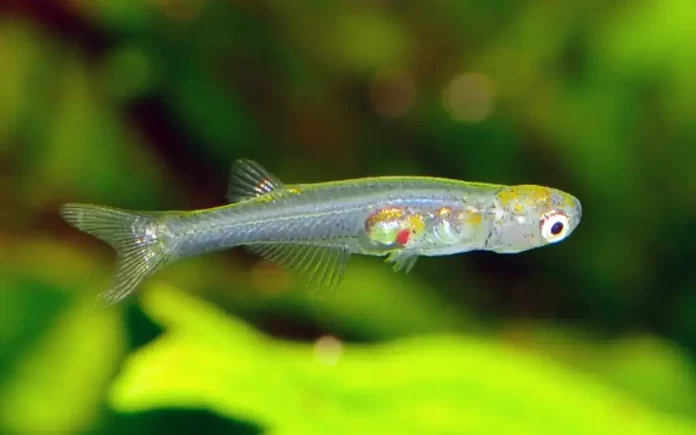New York: In a remarkable revelation, scientists have uncovered that the male Danionella cerebrum, one of the world’s smallest fish barely wider than an adult human fingernail, emits a sound as piercing as a gunshot. Measuring just about 12 mm in length, this fish inhabits the streams of Myanmar.
As documented in the PNAS journal, researchers found that the fish can produce clicks reaching 140 decibels, akin to the intensity of an ambulance siren or gunshot.
Typically, fish generate sounds through the vibration of their swim bladder, an organ filled with gas that aids in buoyancy. This involves rhythmic contractions of special muscles, akin to drumming. However, the unique sound production mechanism of the Danionella cerebrum, renowned for possessing the smallest brain among vertebrates, has puzzled scientists, defying conventional swim bladder-related muscle explanations.
Researchers at Charité University in Berlin unraveled that the fish possesses a distinct sound production system involving drumming cartilage, ribs, and fatigue-resistant muscles. These features enable the fish to propel the drumming cartilage with remarkable force, resulting in swift and resonant sound pulses.
Understanding this adaptation sheds light on animal locomotion mechanisms and underscores the astonishing diversity in movement strategies across species. “This adds to our knowledge of how living things have changed over time and how their bodies work,” the paper notes.
High-speed video recordings facilitated the study of sound production. During this process, a specific muscle displaces a rib near the swim bladder onto a piece of cartilage. Upon release, the rib strikes the swim bladder, generating the drumming sound. Notably, males possess harder ribs, explaining why females do not produce sounds.
Despite this fascinating discovery, scientists remain puzzled about the purpose behind the Danionella cerebrum’s loud sounds. Speculations range from aiding movement in murky waters to serving as a warning signal among males. Found in turbid low-altitude streams along the southern and eastern slopes of the Bago Yoma mountain range in Myanmar, the Danionella cerebrum continues to intrigue researchers with its unique traits.



